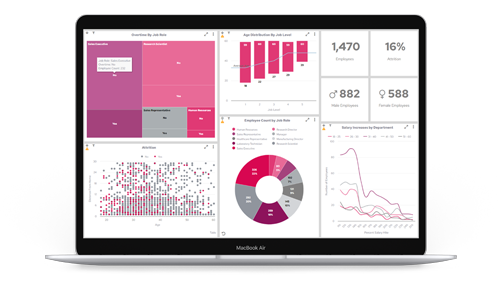As innovation in Fintech SaaS increases, so does the pressure to safeguard sensitive data. That's where airtight cyber security comes in—the key to maintaining customer trust and meeting regulations.
With best practices and the right tech, it opens the doors to real-time surveillance and swift responses to potential security threats – ensuring you spot and react to security risks quickly.
In this blog, we're going to dive into how to strengthen the Fintech SaaS cyber security frameworks. Plus, we’ll pull in expert opinions from the likes of FINBOURNE, incuto, Lenvi, Mutual Vision, OnePay, techUK, Starling Bank and Tred for their perspective on Fintech SaaS data security, today.
Keen to get started? Let’s jump in.
Fintech SaaS cyber security: The challenge
As Andy Thornley from techUK quite rightly points out, the Fintech SaaS industry is a magnet for cybercriminals because of the volume of highly sensitive data. This means the sector needs to stay sharp when it comes to cyber security.
But Andy says Fintech SaaS is hitting a big challenge: mixing innovation with tight security. Fintech companies are all about pushing tech boundaries, but the more they innovate, the bigger the risk of sophisticated cyber threats. The information these firms handle isn’t just data. It can also be the financial lifeline of individuals and businesses. So, the impact of a breach goes beyond data loss—it's a direct hit to the trust that's key in this market.
Echoing this statement, Sarah Pritchard, Executive Director of Markets at The Financial Crime Summit 2023, says
This shows that cybercrime's impact is wide—it's not just one problem for one company—it hits everyone connected.
Cost and consequences of data breaches
The financial hit from data breaches in Fintech is huge, extending far beyond immediate monetary losses. The global cost of a data breach is now $4.45 million on average. This figure, having risen by 15% over three years, shows how cybercrime is really putting the squeeze on businesses financially.
And losses from Authorized Push Payment (APP) fraud totalled nearly £500 million in 2022.
But the real cost is even bigger. When a Fintech SaaS company faces a data breach, it's not just about the immediate costs to fix and recover. The fallout is huge—customers lose trust, the company's reputation takes a hit, and winning back trust is a tough hill to climb. These hidden costs can overshadow the initial expense and have a long-lasting impact on how well the business does.
Anne Boden, CEO of Starling Bank, sheds some light on the constant battle against cybercrime. She points out the need for non-stop investment in cyber security:
Ultimately, Fintech SaaS data security needs to withstand attacks but also stay nimble for rapid tech shifts. It's a culture of constant learning and upgrading.
Balancing cyber security and regulation in Fintech SaaS
Fintech SaaS providers are not only tasked with protecting sensitive data but also with adhering to regulatory standards that govern the industry. This dual responsibility is exactly why a comprehensive approach to cybersecurity is essential—one that seamlessly integrates robust protection measures with strict regulatory compliance.
Meeting regulatory compliance
For Fintech SaaS providers, regulations cover everything from anti-money laundering laws to data compliance and privacy regulations. And these change frequently. It's a continuous process of adaptation and improvement, ensuring that solutions not only meet current standards throughout every process and technology used, but they’re ready to adapt too.
So, how do market leaders manage this?
The challenge, as Tom points out, is not just keeping up with the hackers but staying several steps ahead. This requires a deep understanding of technology and the mindset of cybercriminals. To be proactive with protection, Fintech SaaS providers must continually invest in advanced security measures, leverage cutting-edge technologies like AI for threat detection, and create a culture of cybersecurity awareness within their organizations (more on this later).
Take the biggest, oldest, most confounding data problem of all: Managing and integrating data across the organization. Today, that endeavor cries out for help from embedded technologies, as the volume, variety, variability, and distribution of data climbs an endless mountain.
Utilizing embedded analytics
Can embedded analytics really help impose order on data chaos? The answer is a qualified yes. Incumbents such as FINBOURNE, incuto, and Mutal Vision have added embedded analytics capabilities to enhance innovation. And because it doesn’t move data from the source, it adheres to their existing security and governance.
Say hello to next-level analytics – without compromising data security.
Still on the fence? Let’s delve into your options a little more.
Legacy systems vs modern security solutions
The contrast between legacy systems and modern security solutions in Fintech SaaS is like comparing night and day.
Legacy systems
Legacy systems, built on older tech, are riddled with gaps that savvy cybercriminals can easily exploit. These systems used to be the backbone of financial services, but now, they're struggling to keep up where cyber threats morph and multiply at lightning speed.
That’s because they were designed in an era where cyber security threats were not as sophisticated or prevalent as they are today. As a result, they often lack the advanced security features necessary to fend off modern cyber attacks. Their rigid architecture makes it difficult to implement necessary updates or integrate new security tools. This inflexibility leaves them exposed to a range of threats, from data breaches to ransomware attacks.
Modern systems
On the flip side, modern security solutions are flexible, they can scale up, and they’re quick to adapt to new threats. These systems come packed with all the latest tech – features like real-time threat detection, machine learning algorithms for anomaly detection, and advanced encryption technologies are standard in these systems.
Plus, many use cloud-based setups, giving you the perks of ongoing updates, watchful remote monitoring, and plans in place for disaster recovery.
Anne's take gets right to the heart of why it's high time for financial institutions to move on from these aging systems to something more secure and up-to-date. This shift isn’t just about getting the latest tech. It's a whole new way of thinking about protecting data – being proactive rather than reactive. Modern solutions bring the nimbleness, strength, and flexibility needed to tackle the cyber threats we face now and those that are still on the horizon.
The human factor in cyber security
Of course, one of the most unpredictable factors in cybersecurity is the human aspect. Even with advanced tech defenses, human error remains a key vulnerability—highlighting the need for an approach that extends beyond just technology.
Industry experts regularly note that, although systems can be nearly impenetrable, human error can still present a significant weak spot. Simple actions like clicking a phishing email, using weak passwords, or improperly handling sensitive information can lead to serious breaches. These mistakes usually arise from a lack of awareness or understanding of cybersecurity protocols, not a deficiency in technology.
The solution? Educating both staff and customers is crucial. Holding regular training sessions, running phishing simulations, and maintaining ongoing awareness initiatives arms people with the knowledge and skills to spot and sidestep security threats. Ultimately, the goal here is to embed a culture of cybersecurity awareness so deeply that safe practices become second nature.
Anne Boden of Starling Bank also highlights this, pointing out our natural tendency to trust, which can be a double-edged sword in cyber security: “Despite the fact that a huge amount of money is going into fighting cybercrime, the biggest weakness we have at the moment is human nature. I think that humans like to trust other humans, and therefore we're putting a lot of emphasis on machine learning to help the customer to help themselves”.
Embedded analytics isn’t a silver bullet. Tackling the human in the loop is just as important as it empowers individuals to be proactive in guarding against cyber threats.
Robust regulation in a digital era
This balancing act between staying compliant and being innovative is at the heart of the Fintech regulatory scene. On one side, there's a crucial need to stick to tight regulations that protect customer data and keep financial systems safe. These rules aren’t set in stone; they change with new tech, emerging threats, and shifts in the market. So, staying compliant is an ever-moving target that demands constant attention and flexibility.
On the flip side, there's an equally strong push for innovation. Fintech thrives on new ideas – they're what give companies their edge, keep customers happy, and drive the market forward. But it's vital that this push for the new doesn't overlook security and compliance.
Mike Fisher from Mutual Vision captures this sentiment well; “The sector is only getting more regulated from the point-of-view of the Fintech customer, with increasing regulation on systems, data, and security. Anybody supplying core systems has to take responsibility and talk to this overarching message of regulation. The landscape is always shifting, and we need to keep on top of it. Fortunately, the FS sector is really risk aware.”
To sum it up: By striking the right balance between meeting compliance needs and pursuing innovation, Fintech SaaS providers can not only stay in line with current standards but also help shape the future of financial technology in a secure and responsible way.
Fintech SaaS data security: Key strategies
The pace of innovation is at an all-time high. To ensure your security matches pace, here are some important points to remember:
- Cybersecurity challenges: Fintech SaaS grapples with safeguarding sensitive data amidst constant innovation. Data breaches impact not just finances but also trust and reputation.
- Cost of breaches: The global cost averages $4.45 million, but the real impact includes customer trust loss and reputational damage.
- Regulatory compliance: Fintech SaaS must constantly adapt to comply with evolving regulations like anti-money laundering and data privacy.
- Cybersecurity best practices: Key practices include role-based permissions, multi-tenancy, role-level security, and strict access authentication.
- Embedded analytics: This doesn’t move data from the source, it adheres to existing security and governance.
- Legacy vs modern solutions: Modern security solutions, unlike outdated legacy systems, offer advanced threat detection and encryption.
- Human factor: Educating staff and customers is critical to mitigate risks from human error.
- Innovation and regulation: Fintech needs to innovate while adhering to regulatory standards, balancing security with progress.
SaaS must be sharp-eyed when its solutions are being used to support financial technology or services. Though SaaS itself doesn’t tend to hold users’ personal or financial data in accounts, vigilance is key to prevent its platforms from being thwarted by a security breach – and to protect customer data. With the scope of cyber attacks only growing, it’s an arms race between the newest hacking method and keeping security systems within SaaS just as advanced and primed to defend.
When we launched Panintelligence, we built pi with data security at the core. It’s why pi is aligned to your security model and it’s why pi never moves your data, ensuring full integrity and governance.
Unlike other solutions, our pi logic layer allows us to query your data from any source without the need to export or manipulate on our platform. Giving you easy to deploy dashboards and data insights, in real time, without the risk of exporting data exploitation.






















